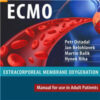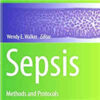The Role of Central Venous Oxygen Saturation (ScvO2) as an Indicator of Blood Transfusion in the Critically Ill
clinicaltrials.govTransfusion of red blood cells is an everyday practice in critical care with the primary aim of restoring adequate tissue oxygenation. However, blood transfusion may also be harmful and costly, therefore a so called restrictive transfusion regime has been suggested by recent guidelines. These transfusion guidelines consider certain levels of hemoglobin as transfusion trigger, which on its own gives little information if any about the balance between oxygen delivery (DO2) and consumption (VO2). Hence, there is a clear need for additional physiologic transfusion trigger values. One of the potentially useful and easily obtainable physiological parameters is the central venous oxygen saturation (ScvO2), which has been shown to be a potential transfusion trigger value in hemodynamically stable but anemic patients. However, the role of ScvO2 as a transfusion trigger value was examined only in a retrospective observational study and in animal experiment.
The normal value of ScvO2 in a resting adult at rest is around 70-75%, which is the product of the VO2 and DO2 relationship. Low ScvO2 usually indicates inadequate DO2. It was found in an observational study that if ScvO2>70% before transfusion due to transfusion only the value of hemoglobin increased but the value of ScvO2 did not change. This finding indicates that the DO2 may have been adequate in spite of the low hemoglobin value and the transfusion may have been unnecessary. In one of their recent animal experiments, the investigators reported that in an isovolemic-anemia model the value of ScvO2<70% was only reached when the value of hemoglobin was far less, 59 g/L, than the recommended lowest value of 70g/L as transfusion trigger by guidelines.

















